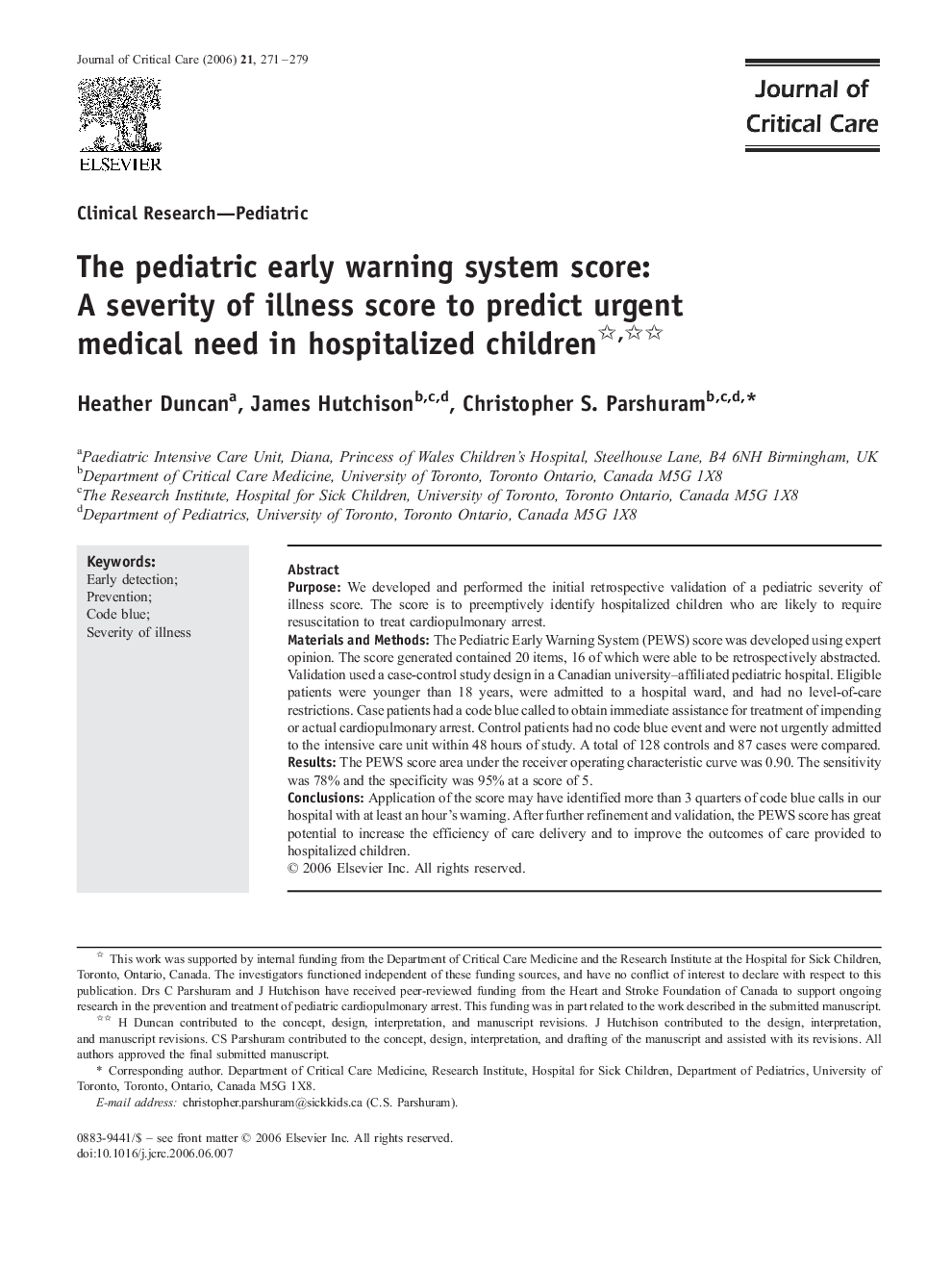| کد مقاله | کد نشریه | سال انتشار | مقاله انگلیسی | نسخه تمام متن |
|---|---|---|---|---|
| 2765090 | 1150952 | 2006 | 8 صفحه PDF | دانلود رایگان |

PurposeWe developed and performed the initial retrospective validation of a pediatric severity of illness score. The score is to preemptively identify hospitalized children who are likely to require resuscitation to treat cardiopulmonary arrest.Materials and MethodsThe Pediatric Early Warning System (PEWS) score was developed using expert opinion. The score generated contained 20 items, 16 of which were able to be retrospectively abstracted. Validation used a case-control study design in a Canadian university–affiliated pediatric hospital. Eligible patients were younger than 18 years, were admitted to a hospital ward, and had no level-of-care restrictions. Case patients had a code blue called to obtain immediate assistance for treatment of impending or actual cardiopulmonary arrest. Control patients had no code blue event and were not urgently admitted to the intensive care unit within 48 hours of study. A total of 128 controls and 87 cases were compared.ResultsThe PEWS score area under the receiver operating characteristic curve was 0.90. The sensitivity was 78% and the specificity was 95% at a score of 5.ConclusionsApplication of the score may have identified more than 3 quarters of code blue calls in our hospital with at least an hour's warning. After further refinement and validation, the PEWS score has great potential to increase the efficiency of care delivery and to improve the outcomes of care provided to hospitalized children.
Journal: Journal of Critical Care - Volume 21, Issue 3, September 2006, Pages 271–278